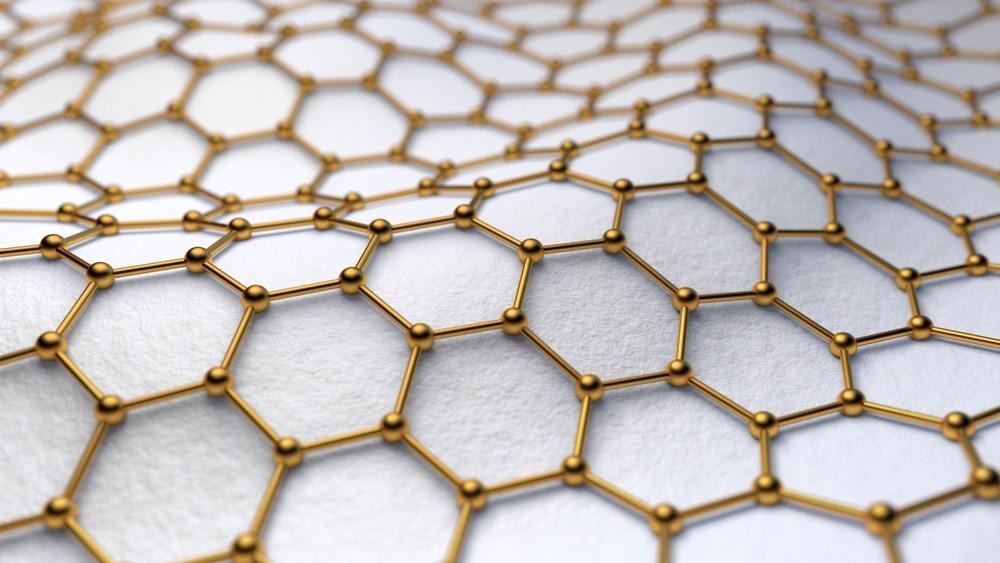 By Surbhi JainReviewed by Susha Cheriyedath, M.Sc.Apr 11 2022
By Surbhi JainReviewed by Susha Cheriyedath, M.Sc.Apr 11 2022In an article recently published in the journal Carbon, researchers discussed the potential applications of novel two-dimensional (2D) fenestrane-based auxetic nanocarbon allotropes i.e., four-penta-graphenes in nanoelectronics and optoelectronics.

Study: Four-penta-graphenes: Novel two-dimensional fenestrane-based auxetic nanocarbon allotropes for nanoelectronics and optoelectronics. Image Credit: OliveTree/Shutterstock.com
Background
Carbon is a chemically unusual element that can adopt several hybridization states, permitting variable covalent interaction between carbon atoms and resulting in a broad variety of allotropic forms with various characteristics. Due to its interesting features, the discovery of graphene, a single sheet of graphite, has become one of the most attractive scientific developments.
Graphene's unique qualities allow it to be employed in a wide range of applications, including fuel cells, nanoelectronics, and energy storage devices. Many academics have been attempting to advance beyond graphene in recent years. Theoretically and physically, a broad family of 2D graphene allotropes, including a mixture of sp, sp2, and sp3-hybridized carbon atoms, has been observed.
Following the synthesis of a pure pentagon-based C20 cage, there is an increase in pentagonal unit research that goes beyond hexagonal and tetragonal units. Experiments have revealed atomically thin pentagonal PdSe2 crystals exfoliated from the bulk structure in parallel with these advancements. 2D pentagonal materials are appealing for energy-related applications due to their unique characteristics.
About the Study
In this study, the authors presented four-penta-graphenes (fPG), a novel 2D carbon allotrope hypothetically derived from the assembly of fenestrane molecule units, based on first-principles calculations. The involvement of sp2/sp3 and the sp/sp2/sp3 ratio on the electrical characteristics of fPG monolayers was demonstrated.
The researchers demonstrated that carriers with great mobility have an anisotropic effective mass, which made them promising for nanoelectronics. The substantial excitonic effects of fPG semiconductors with discrete optical absorption peaks in the visible light band were shown using many-body GW0+BSE approximations. Their potential for optoelectronic devices was also illustrated owing to exceptional optical characteristics.
The team revealed the predictions of a novel fPG, based on the [5.5.5.5.]Fenestrane molecule, which has four consecutive pentagons (or fP unit). The stability and intrinsic features of three types of the fPG allotropes, namely α-, β-, γfPG, were investigated using first-principles calculations. The formation energy, ab-initio molecular dynamics (AIMD), phonon band dispersion, and elastic tensor analysis were used to study the stability of the fPG monolayers from the dynamical, thermal, energetic, and mechanical perspectives, respectively. Their mechanical, transport, electrical, and optical properties were compared to those of PG.
Observations
The fPG monolayers were found to be more energy-efficient than penta-graphene and had good stability, as evidenced by thermal, dynamical, and mechanical measurements. They had unusual mechanical features, including anisotropic in-plane stiffness and auxetic behavior with a sign-tunable Poisson's ratio. They also had a wide range of electronic characteristics, from narrow bandgap semiconductors to metals.
Strain engineering allowed the bandgap of fPG semiconductors to be adjusted. Furthermore, the compressive strain caused an indirect-to-direct bandgap transition, whereas tensile strain caused a semiconductor-to-metal transformation. The structure of the α-fPG monolayer was identical to that of the Me-graphene or C568 monolayer.
More from AZoM: Industry 4.0 and Chemical Processes
The absence of imaginary frequency of phonon modes in the phonon dispersion curves confirmed the dynamical stability of fPG monolayers. They could resist temperatures of up to 1000 K, which indicated their thermal stability. The elastic stiffness constants satisfied the mechanical stability criterion. The monolayers had outstanding electrical, mechanical, and optical capabilities in addition to their strong stability. It was shown that α-fPG had an isotropic Young's modulus and Poisson's ratio, whereas β-fPG and γ-fPG were very anisotropic.
Furthermore, the fPG monolayers were auxetic materials that had a PR of less than one. Strain engineering could efficiently shift the sign of PR from positive to negative or negative to positive. According to electronic band structure measurements, α-fPG and β-fPG were intrinsic semiconductors with band gaps of 1.06 eV and 0.43 eV, respectively, while γfPG was metallic. The bandgap energy was reduced when aceytlenic groups were inserted between the fP units. Strain engineering could modify the electrical bandgap and band edge placements for α-fPG and β-fPG.
Conclusions
In conclusion, this study elucidated the existence of novel carbon allotropes as a result of the advancement of the pentagonal lattice. It was discovered that fPG monolayers were more energetically advantageous than pentagraphene and graphdiyne allotropes produced in the lab. Importantly, during compressive strain, they converted from indirect to direct bandgap semiconductors, and under tensile strain, they transitioned from semiconductor to metal. The effective mass of the hole and electron suggested significant anisotropic transport behavior, which could be improved through strain engineering.
The authors emphasized that by adding electron-hole interactions in the optical spectra of fPG semiconductors, the excitonic peaks present in the optical spectra could be studied. They also believe that the findings of this study highlight the electrical, mechanical, and optical features of a new class of 2D carbon allotropes that could be used in nanoelectronics and optoelectronics.
Disclaimer: The views expressed here are those of the author expressed in their private capacity and do not necessarily represent the views of AZoM.com Limited T/A AZoNetwork the owner and operator of this website. This disclaimer forms part of the Terms and conditions of use of this website.
Source:
Kilic, M. E., Lee, K. R., Four-penta-graphenes: Novel two-dimensional fenestrane-based auxetic nanocarbon allotropes for nanoelectronics and optoelectronics. Carbon (2022). https://www.sciencedirect.com/science/article/abs/pii/S0008622322002883